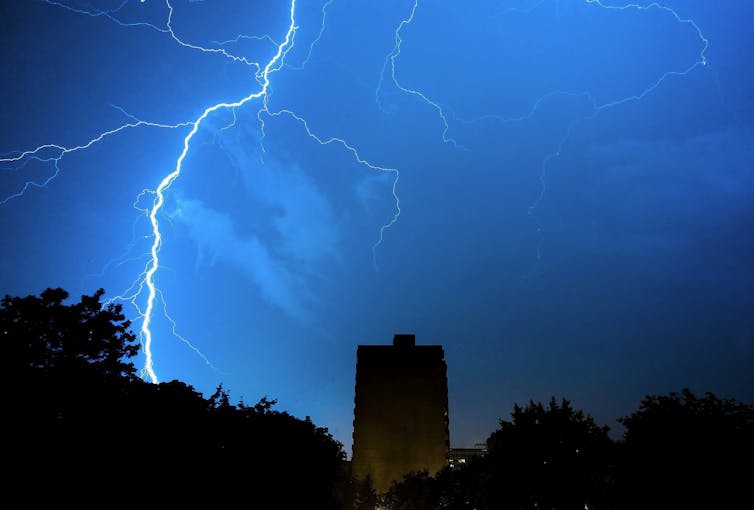Residents of the federal riding of Toronto-St. Paul’s will soon be tasked with voting for their next Member of Parliament. Under conventional circumstances, this wouldn’t be very interesting. The riding, occupying a sizable section of midtown Toronto, has been a Liberal stronghold for the last several decades.
Former cabinet minister Carolyn Bennett, who represented the area from 1997 until early this year, regularly won the seat by at least 25 percentage points. Even in 2011, an otherwise devastating year for the Liberals, she won by just over eight points.

But things seem different this time. Although the Liberals remain ahead, recent polls show it’s a uniquely slim lead. Instead, the Conservatives — despite winning only 21 per cent of the vote in Toronto-St. Paul’s in 2019 — are as close as four points behind. Both parties have invested considerable resources into the area, expecting a competitive contest on June 24.
If the Liberals lose the riding, it would be an ominous sign for Justin Trudeau’s government.
The importance of byelections
Byelections can serve as important indicators of ongoing and emerging trends. Unlike general elections, an individual riding receives sustained media attention, and parties can devote a far greater degree of resources than normal.
Voters often respond to political events as they happen in real time. In this byelection, that certainly works in favour of the Conservatives.
Toronto-St. Paul’s voters may be voicing their discontent with Canada’s ongoing economic problems. The country’s economic growth continues to stagnate, the rate of housing construction has stalled, unemployment has risen and inflation — although now under control — continues to be felt by many Canadians.
Undoubtedly, this is especially acute for those under the crunch of Toronto’s ever-higher cost of living.
Byelections also often have a much lower turnout than normal elections, rarely drawing more than a third of eligible voters. This can not only accentuate voting trends that would otherwise be submerged under larger voting numbers, but can make the mobilizing efforts of the parties that much more important.

Dim prospects for Conservative victory
Nonetheless, the Conservatives are still unlikely to win in Toronto-St. Paul’s. That’s because byelections don’t often change the fundamental character of an electoral district.
The fact remains that Toronto-St. Paul’s, as with most of the city south of Eglinton Ave., is disproportionately made up of the kind of voters that are least likely to support the Conservatives: highly educated and socially progressive while generally more affluent. With a continually weak NDP and Green Party, the Conservatives are unlikely to see a vote split on the centre-left that they’d need to succeed.
Public opinion polls indicating such a close race, however, are remarkable on their own, showing the extent of the Liberal government’s increasing unpopularity. More than anything, they serve as a disconcerting — though not very surprising — indicator to the party of its need to change course if it wants to avoid massive electoral defeat in the near future.
At worst, Toronto-St. Paul’s may indicate that Trudeau’s Liberals no longer have any real chance to make that change. It’s another sign — alongside a considerable length of time in power, economic stagnation and several damaging scandals — that Canadians are increasingly motivated by a desire for serious change in government.
Although young administrations can often be capable of addressing this mood, flexibility is always constrained by the disappointments and complacency that comes with incumbency. It’s difficult to restore a tarnished reputation after nine years.
Pendulum will swing back
Since an upcoming wave of change in a general election seems inevitable, it may limit the Liberals’ ability to sway their electoral fortunes. But it also means the discontent is likely shallow and not indicative of a major, permanent realignment in Canadian politics.
Liberals have suffered numerous, quite devastating defeats in their history — in 1958, 1984 and 2011 — before reclaiming their core base of support.
In fact, Toronto-St. Paul’s is likely to become more Liberal in the future. It decidedly stands on one side of a growing number of divisions that will structure Canadian politics over the coming years.
These divisions include the differences between rural and urban areas, social conservatives and progressive liberals and divides between knowledge-economy workers and those who rely on conventional manufacturing or resource-based sectors.
In many ways, an important fault line lies between suburban and midtown Toronto, a location where Toronto-St. Paul’s arguably sits. At the riding’s north border, for example, Eglinton-Lawrence is a far more competitive riding that has elected Conservatives in the recent past, even though it leans Liberal.
Unlike those closer to the downtown core, suburban voters are not only more likely to feel economic frustrations, but rely on a more diverse set of industrial sectors for their livelihood. This means the suburbs are not only primed for a Conservative takeover, but will continue to serve as swing districts that decide Canadian elections.
But for the time being, what matters is that the Liberals are in trouble. Voters apparently want change — with or without Trudeau at the helm of the party.

